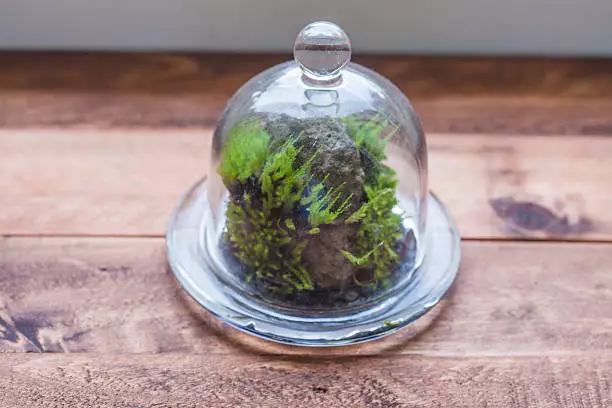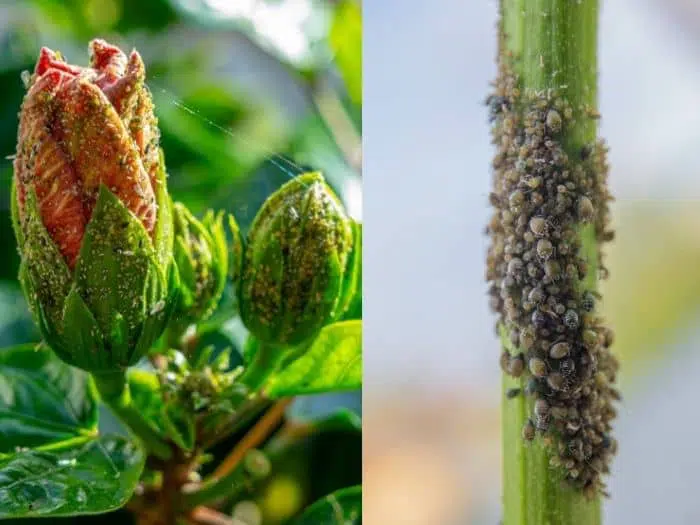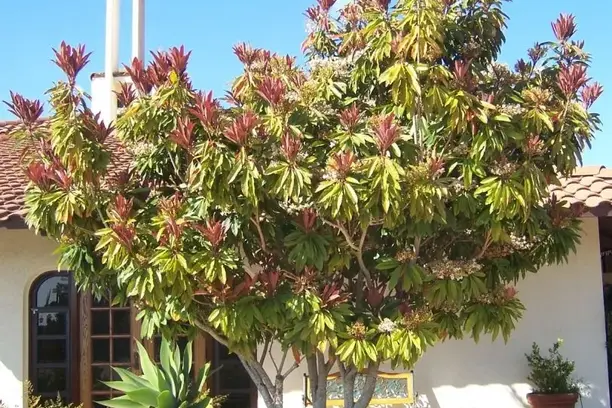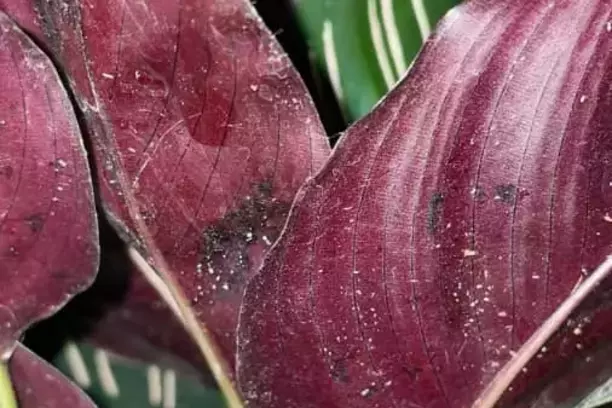The yellowing of leaves is also known as chlorosis. Yellowing of leaves results from the lack of the green pigment, chlorophyll. Orange tree leaves are prone to yellowing, especially when growing in unfavorable conditions. So what causes the yellowing of orange tree leaves?
Orange leaves turn yellow due to overwatering, iron deficiency, and fungal diseases such as root rot. Apply nitrogen fertilizer or urea to fix the yellowing foliage. If the soil is soggy, repot the tree in a fresh soil mix then water it 1-2 times a week while allowing the soil to dry out between waterings.
Why are orange tree leaves turning yellow?
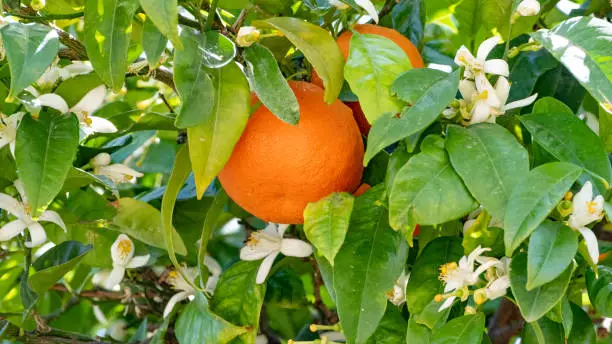
The yellowing of orange tree leaves is mainly caused by overwatering, nutrient deficiency, excessive use of organic manure, and diseases like root rot. When the leaves are discolored, there’s generally reduced water and mineral absorption and transportation in the plant.
Here’s why orange tree leaves turn yellow:
Overwatering
Orange trees appreciate well-drained soils and moderate watering. Overwatering them causes leaching of vital nutrients and cause root rot. In return, the leaching of nutrients and root rot leads to discoloration of leaves.
Leaching of nutrients below the rooting zone temporarily causes nutrient deficiency. Although it is a temporary effect, it causes yellowing and premature death of leaves. The leached nutrients are unreachable by the shallow plant roots. However, when the roots grow deeper, they recycle the leached nutrients.
Root rot disease damages the healthy roots. Roots decay limits the absorption and transportation of nutrients to a few healthy roots. With only a few roots functional, the leaves do not get enough minerals for chlorophyll formation.
Nutrient deficiency
Plants, including orange trees, need iron, nitrogen, zinc, and manganese for chlorophyll formation. Lack of enough quantities of these nutrients leads to chlorosis. The two major nutrients-deficiency related chlorosis are:
- Iron chlorosis
- Nitrogen chlorosis
In soils with high pH levels, above 7.0, high phosphorus, and the presence of lime iron solidifies and becomes deficient in the plant since solid iron is unavailable for absorption by the orange trees. Solid iron forms a plastic-like layer that limits soil aeration and causes waterlogging. Iron is an immobile nutrient, and it is deficiency affects only the new growth of leaves.
Chlorosis causes stunted growth, reduces the fruit’s size, and decreases the production volume. You want to apply a fix as soon as you notice the signs of chlorosis to prevent serious issues such as fruit and leaf loss in citrus trees. Or better, take precautionary measures to prevent your leaves from yellowing.
RELATED: HOW TO REVIVE LEMON TREE LEAVES FROM FALLING OF
Nitrogen deficiency can also make your orange trees turn yellow. It causes a type of yellowing called nitrogen chlorosis and is common when you feed your orange tree with a lot of organic matter with high carbon content.
Microbes in the soil use nitrogen to break down carbon contents and end up depleting the available nitrogen nutrients in the soil. Nitrogen is a mobile nutrient that moves from the older foliage to the young leaves. So, nitrogen chlorosis begins from the older leaves towards the new growth.
Is chlorosis treatable? Yes, you can treat chlorosis through foliar spraying, soil fertilization treatment with a good citrus fertilizer, and trunk injections.
Lack of enough manganese and zinc in the soil also causes discoloration of leaves. Manganese and zinc are immobile nutrients. The deficiency of manganese and zinc starts showing in the young and middle growth of leaves.
RELATED: WHAT ARE THE BEST FERTILIZERS FOR CITRUS TREES
Excessive use of manure
Manure contains high contents of salts and ammonia. The high concentration of salts and ammonia damages the roots and beneficial microorganisms.
Reduced microbial activity limits the proper decomposition of organic matter. And, injury to the roots prevents absorption and transportation of nutrients. This leads to a lack of enough nutrients to form chlorophyll, thus causing chlorosis.
Diseases
The primary citrus diseases causing yellow-orange leaves are root rot and Citrus Variegated Chlorosis (CVC). Root rot (Phytophthora gummosis) results from fungus or overwatering.
Root rot leads to the decay of healthy roots, thus hindering the absorption of nutrients. CVC survives in the xylem, thus affecting its functions. So, CVC limits the transportation of water and minerals to other plant parts.
RELATED: CITRUS DISEASES – IDENTIFICATION AND CONTROL
How to stop orange tree leaves from turning yellow
Yellowing of orange tree leaves is treatable. However, with the longer lifespan of orange trees, there is no permanent treatment for chlorosis.
Therefore, treatment approaches require reapplication after a certain duration to achieve better results.
Here’s how to fix yellowing orange tree leaves:
Apply a soil citrus fertilizer treatment
This is a slow-responding treatment option for greening up yellow foliage on orange trees. So, to treat mild chlorosis, use nitrogen-rich or sulfur-rich fertilizers. This method is not effective for severely chlorotic trees. Below are two ways of soil-fertilization treatment:
- Application of nitrogen-rich and sulfur-rich fertilizer.
- Adding iron chelates into the soil.
Soil fertilization treatment is easy to administer. Apply the fertilizer or iron chelates into the topsoil. Ensure it is not beyond two inches of the topsoil. The fertilizer will dissolve into the soil upon watering or when it rains.
Treat with a foliar spray
This treatment method involves the application of water-soluble nutrients. It is a short-term method of treatment but gives effective results. For continuous desirable results, apply the foliar treatment every 60 to 90 days. This method is more useful for treating iron chlorosis. Here is the procedure for using foliar spray:
- Add iron sulfate or iron chelates to water in a ratio of 1 pound to 20 gallons of water.
- Add soybean flour into the solution. This is to help the solution stick to the leaves.
- Add a tablespoon of detergent to help wet the leaves.
- Use a sprayer pump and spray the solution to the leaves. Avoid spraying surfaces such as building as the solution can cause rust stains.
- Spray the solution in the evening or during cold weather. This is to give it ample time to absorb into the leaves.
Trunk injection treatment
This is the application of iron or manganese-rich compounds to the trunk of chlorotic trees. This is an expensive treatment method that gives fast results and remains useful for up to 3 years. Here is the procedure for trunk injection treatment:
- Drill holes in the lower part of the trunk or the root flares near the soil.
- Introduce iron citrate or manganese-rich compound into the trunk through the holes.
- The best time to administer trunk injection is in the spring. But, if the leaves show any signs of chlorosis, you can apply in any other season.
Use an arborist to administer trunk injections. This is to ensure safety and reduce the chances of trunk injuries.
Lower the soil pH to 6.0
This approach involves lowering the soil pH to prevent solidifying of iron nutrients. Lowering soil pH is a permanent way of treating chlorosis. However, it is quite impossible to lower the pH levels of deeper soils. Thus, a more workable approach is the application of iron sulfates or chelates or urea into the soil.
How to prevent leaves from yellowing and falling
There is no permanent treatment for the yellowing of orange tree leaves. Thus, prevention is a suitable method to protect leaves from yellowing and falling. Below are some of the prevention methods:
- Avoid over-watering: Keep the soil of your orange trees well-drained. Water enough to avoid water-logging and causing root rot which leads to chlorosis.
- Fertilize the soil: Frequently fertilize the soil with nitrogen and iron sulfate-rich fertilizers. Fertilizing enriches the soil with vital nutrients, thus avoiding chances of nutrient deficiency.
- Avoid excessive use of manure: Use well-decomposed manure moderately. This is to avoid injuries resulting from high contents of salt and ammonia. Also, well-composted manure will not need nitrogen to break down. Thus preserving nitrogen available in the soil for the plants only.
- Soil pH: Do not plant your orange trees in soils with high pH levels. High pH levels solidify iron nutrients.
References:
[1] Utah State University, Forestry extension: Preventing and Treating Iron Chlorosis in Trees and Shrubs
[2] University of Illinois, Extension Services: Yellow Leaves Can Indicate Plant Problems
[3] San Diego State University, Extension Services: Why Are The Tree Leaves Turning Yellow
[4] The University of California, Department of Agriculture and Natural Resources: The Answers to Common Citrus Questions
